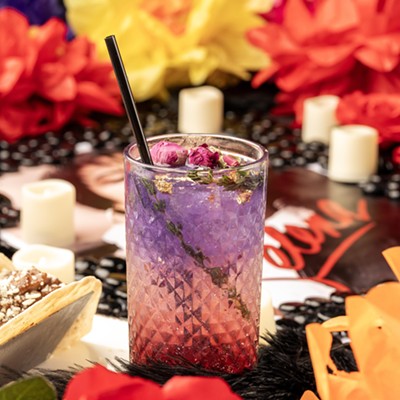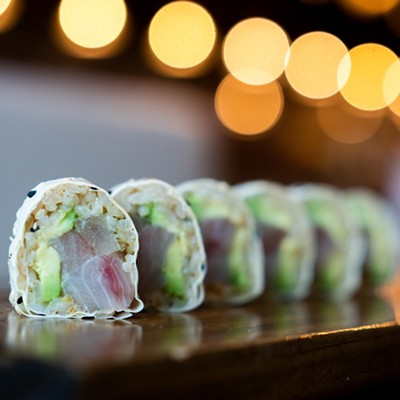"Old man piss."
I hate to say it, but it's the best descriptor to use to describe the color of many of the "orange" wines that are finding their way to our market these days.
As you can see from the color of the wine in the glass above, orange wines aren't really orange: They tend to have a deep golden color, like the 2005 Vitovska by Vodopivec (Carso, Friuli) that we paired with porterhouse pork chops and braised fennel the other night. (I picked it up at the Houston Wine Merchant for about $60, a "special occasion wine" at our house.)
Orange or "skin contact" wines (as they are more properly called) are made by macerating the skins of white grapes with their juice during vinification.
Wine gets its color from the skins of grapes. In the case of red wine, a winemaker can obtain more color by extending the maceration. Or, if she/he wants, a white wine can be obtained from red grapes by immediately separating the skins and juice after the berries have been pressed. Champagne is a great example of this. The primary variety employed in Champagne is Pinot Noir. In order to produce a white wine from the grapes, the winemakers simply press and vinify the juice without any skin contact whatsoever.
Another great example of this is Pinot Grigio, which is actually a light-skinned red grape. After Santa Margherita introduced its now ubiquitous Pinot Grigio in the U.S. market in the late 1970s, we came to know the variety as a "white" grape (even though it's not).
In the case of white grapes and wines, the conventions of contemporary winemaking generally call for the skins and juice to be separated after pressing. And as consumers, we are accustomed to bright, translucent white wines.
In the 1990s, a number of small wineries began to experiment with skin-contact whites. Inspired in part by winemaking treatises scribed before the modern era of winemaking (which began around the mid-19th century), a number of producers in Friuli (northeastern Italy) and the Loire Valley (France) began to experiment with skin contact.
Beyond the color, the skins also impart tannin to the wine (for both red and white grapes) and the winemakers found that they could make structured, powerful wines from white grapes, with remarkable nuance and aging potential. And along the way, they discovered new "applications" for grapes like Vitovska and Ribolla, Friulian varieties that had been used previously to make only light white quaffing wines.
More and more of these wines are making their way to our market and while they are not cheap, they can reward the curious wine lover with their often intense aromas and flavors.
Look for orange wines from Bea (Umbria), including Giampiero Bea's Coenobium; a new wine from Trinchero (Piedmont) that just landed in Houston; and Vodopivec and Gravner from Friuli. I've even seen an orange wine from California: Scholium Project (look for it at Richard's).
Follow Eating Our Words on Facebook and on Twitter @EatingOurWords






